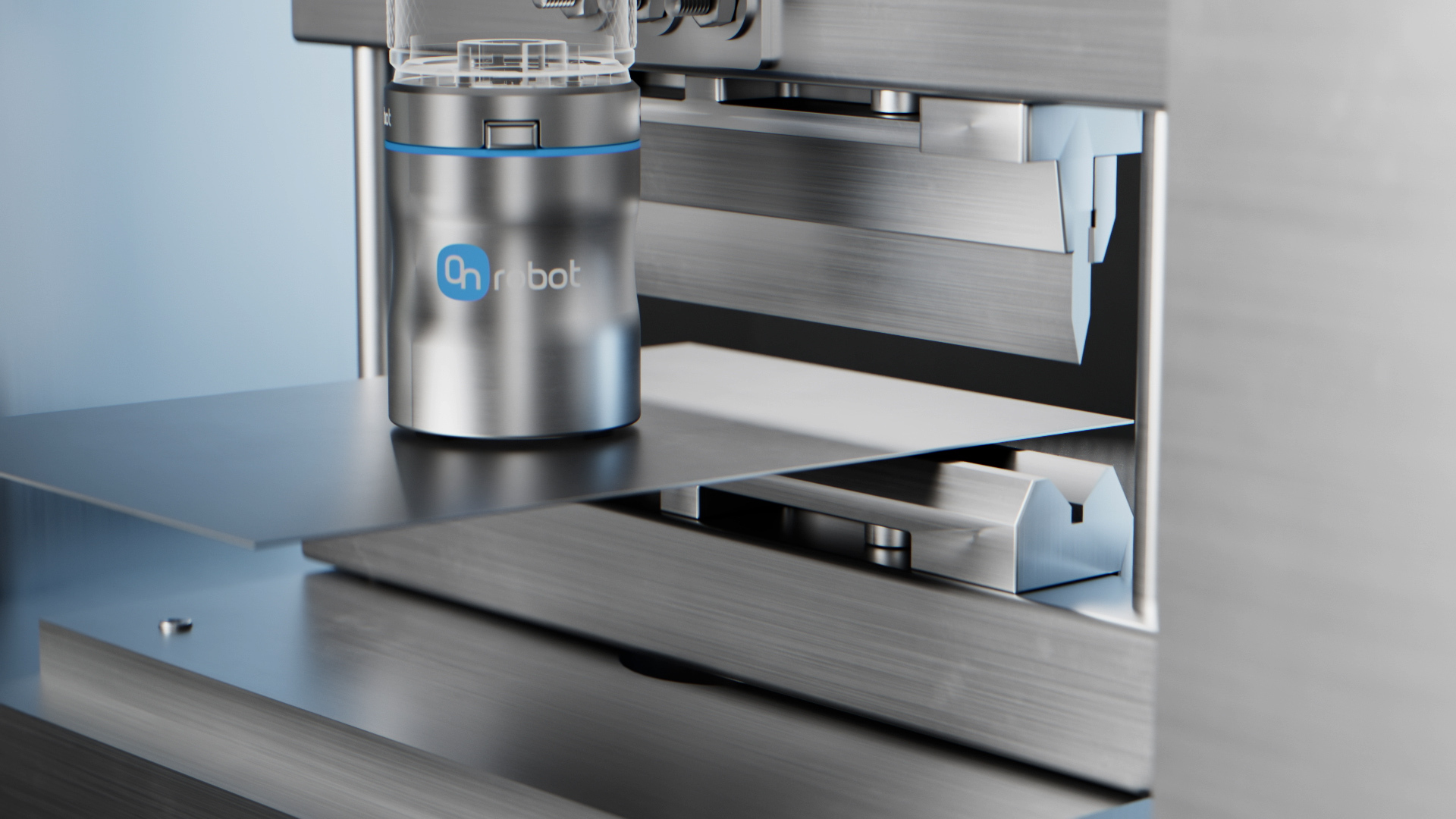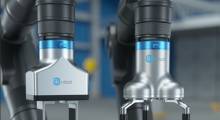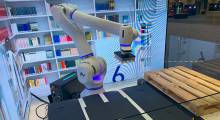Industrial automation in general and collaborative robots in particular found contracting markets in 2020 because of the COVID-19 pandemic. However, the demand for robot flexibility is changing and growing. Warehouse and distribution center operators face challenges retaining workers, and end-of-line tasks such as palletization can cause strain and are costly, according to gripper maker OnRobot. The company said its latest grippers meet the need for easier-to-use robots.
“Safety was the initial consideration for cobots, but we've come so far toward plug and play,” said Kristian Hulgard, general manager for the Americas at OnRobot. “The next big things are ease of use and deployment time.”
Odense, Denmark-based OnRobot A/S was formed in 2018 with the combination of U.S.-based Perception Robotics, Hungary-based OptoForce, and Denmark-based On Robot. It acquired Purple Robotics that same year. In 2019, the company acquired Blue Workforce's technology for its RAGNAR delta robot. OnRobot now has offices in 10 countries.
Last year, the company launched a three-finger electrical gripper, the OnRobot Eyes vision system, and screwdriver and sanding tools. It also launched the 2FG7 cleanroom-ready parallel gripper.
OnRobot builds MG10 magnetic gripper for smoother handling
Today, OnRobot announced the MG10, a new electric magnetic gripper with programmable force features and built-in grip and part-detection features. The company said the MG10 is designed for materials handling, assembly, and machine-tending applications in manufacturing, automotive, and aerospace applications.
“Standard magnetic grippers only provide simple on/off functionality,” stated OnRobot. “To adjust the force applied, users have to add rubber ‘feet’ to create space between the magnet and the part. This is a tedious and imprecise process that doesn’t always guarantee perfect results, especially on applications that involve handling thin metal sheets and small metal parts where magnetic grippers often accidentally end up picking more than one sheet or part as the force cannot be adjusted.”
The MG10's built-in sensing capabilities ensure smooth and safe operations, such as lifting sheet metal from a stack, placing it into a brake/press bending machine, or removing it, said OnRobot. In addition, the gripper eliminates the risk of dropped parts if a robot loses power or has to make an emergency stop, claimed the company.
Unlike pneumatic systems, “which require an external air supply, cabling and ongoing maintenance, the MG10 is ready to go out of the box, resulting in massively reduced deployment costs compared to its pneumatic counterpart,” stated Enrico Krog Iversen, CEO of OnRobot.
In addition, the magnetic grippers are suitable for handling items with abrasive, perforated, or uneven surfaces and a variety of shapes, said the company.
“As the manufacturing sector moves towards low volume/high mix production, the ability to move quickly from one application setup to another quickly is more than a ‘nice to have.’ It’s essential,” Iversen asserted. “The MG10 is the only magnetic gripper on the market that’s sufficiently versatile, intelligent, and so easy to use that it can be quickly redeployed on tasks from machine tending and palletizing to de-stacking of metal sheets.”
VGP20 vacuum gripper designed to cut costs, time of deployment
OnRobot described its VGP20 electric vacuum gripper, which it released last month, as the “world's most powerful” in its class. The vacuum gripper can handle payloads of 20 kg (44.09 lb.), making it suitable for everything from electronics and pharmaceuticals to food and beverage, according to the company.
“Our customers asked for a cost-effective, easy-to-deploy vacuum gripper that can pick up bulky, heavy-duty payloads while being intelligent enough to handle a wide range of items, including those with irregular shapes and porous surfaces,” Iversen said.
Unlike conventional pneumatic grippers, which require compressed air and additional hoses, the electric VGP2 is “ready to go out of the box,” claimed OnRobot. The VGP2's ability to handle flexible materials, heavy boxes, and lightweight bags could allow shippers to use less packaging, saving more money and improving sustainability, Hulgard told Robotics 24/7.
“There are numerous advantages with generating vacuum at the end-of-arm tooling,” he said. “There are deployment costs and time. Everyone points at the exponential growth of robots, but how are you going to install 10 times more robots without more engineers or salespeople?”
“It is a fraction of the cost of pneumatic grippers,” said Hulgard. “We calculate that the upfront payment on our systems would be a little higher than [that for a] standard little pneumatic suction-cup valve. But when you look at the cost of running our gripper versus a compressor-driven pneumatic system, the return on investment for a robot cell is dramatically different.”

“For the past five to 10 years, the conversation was about safety—can we use industrial robots or collaborative robots?” Hulgard said. “Now it's about reducing deployment time. Companies usually spend one to two days installing compressors, cables, and tubes. Integrators could use that time to install more robots for the end users.”
“The most feedback we get is about the time savings,” he added. “By cutting the installation process for the compressor, vacuum line, and cable ties, we completely eliminate that delay in deployment.”
Hulgard said he expects the VGP20 to find use in packaging and palletizing, as well as food and beverage.
Compatibility key to wider cobot use
Both the VGP20 and MG10 end-of-arm tools are compatible with robot arms from major vendors through OnRobot's One System Solution connections and software.
“Most tool manufacturers have their own software; we've gone another route,” Hulgard said. “We want the users to pick the software they want. They generally use the software, operating system, or programming on the robot. For every product we launch, we launch software packages for every single robot out there, so they don't need any additional tools. We have plug-ins for all the cobot manufacturers, which dramatically reduceds deployment time.”
What about third-party monitoring software? “We work with differerent vendors and are not limiting ourselves to supplying only grippers or hardware,” responded Hulgard. “We want to be a one-stop shop for every component—including hardware—for applications.”
“Last year, the cobot and light industrial market declined by 20%, but we still grew by 47%,” he added. “One reason we had that growth is because we identified coronavirus-resistant industries.”
“2021 is really picking up—the numbers don't lie,” Hulgard said. “There are a lot of components in robotics applications, and everything needs to work together. When customers win, everybody's happy.”
About the Author
Follow Robotics 24/7 on Linkedin
Article topics
Email Sign Up


















